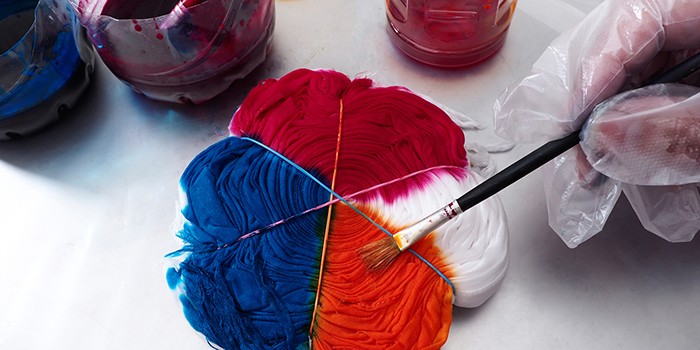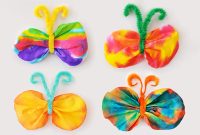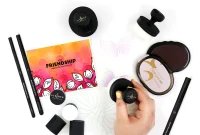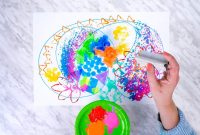In the exciting world of do-it-yourself (DIY) making, fans are always looking for new ways to make their projects more unique. The use of hand-made colours is a style that has become very popular. Not only do these custom colourants give things a unique look, they also let artists be creative. This piece will delve into the interesting world of making your own dyes at home. We will look at the basics, skills, and uses that can really change the way you colour work.
I. The Beginning
A. The Crafting Boom
These days, people value their own uniqueness, so do-it-yourself making has become very popular. People enjoy making things that show off their style and personality, from greeting cards they make themselves to home decor they customise.
B. The Rise of Chemicals Made by Hand
There are a lot of choices, but handmade paints have become popular because they allow you to change colours in an eco-friendly and creative way.
II. How to Make Your Own Handmade Dyes
A. Learning About Handmade Dye
Handmade dyes are made with natural materials, so they are better for the environment than store-bought colours. They come in a wide range of colours and shapes, which is why many DIYers like to use them.
B. Pros of Making Your Own Dyes
Craft colours that are made at home often don’t contain chemicals that are bad for you or the earth, unlike store-bought dyes. Because of the different makeup, each colour is also unique.
Step 3: Pick the Right Ingredients
A. Ingredients from nature
Foods like fruits, veggies, and herbs are often used to make colours by hand. Crafters can make a wide range of colours by looking into the qualities of each one.
B. Advice on How to Choose
It is very important to pick the items based on the colour you want. Knowing how the colour wheel works can help artists get the colours they want.
IV. A Step-by-Step Guide to Making Your Own Dye
A. The Basics of Dyeing
Get your workspace ready.
Make a place just for dying so that you don’t make a mistake or hurt yourself.
Get the Ingredients
Gather the natural products and tools you’ll need.
Get the Colours Out
To get bright colours, just follow a simple extraction process.
Put on dye
Try applying it in different ways to get different effects.
Put together and seal
Fix and seal the coloured materials to keep the colours safe.
B. Tips for Trying New Things
Tell your readers to try out different amounts and types of items to make their own colours that fit their artistic vision.
Part V: Uses in Colour Crafting
A. Do-it-yourself jobs
Show tie-dye clothes, special fabrics, and one-of-a-kind drawings as examples of how dye can be used by hand.
B. Adding creativity
Find creative ways to use hand-made paints in various projects, which will push readers to think outside the box.
VI. Dyeing Tips and Tricks That Work
A. Steps for safety
Stress how important it is to wear safety gear and work in a well-ventilated area to keep the making area safe.
B. Fixing Trouble
Common problems that happen during the dying process, like odd colouring or fading, can be fixed in a useful way.
VII. How Long Do Homemade Dyes Last?
A. Making things that are good for the environment
Talk about how using natural products is good for the earth, with a focus on how it cuts down on chemical waste.
B. Green or eco-friendly actions
Give advice on how to get ingredients in a responsible way and cut down on waste while making.
VIII. Showing off success stories
A. Profiles of Crafters
Showcase people who have used homemade dyes successfully in their projects and ask them to share their experiences and results.
B. Stories that give you hope
Show how imagination can change things by telling stories that make people want to start dying their own clothes.
IX. Looking into more advanced methods
A. More advanced dying
Show people how to do more difficult things, like shibori dying or making gradient effects, so they can improve their skills even more.
B. Extra Helpful Links
For people who want to learn more about advanced hand-dying skills, suggest books, online lessons, and classes.
X. Questions That Many People Ask
A. What kinds of things can I use to make my own dyes?
Give a list of popular items, like spinach, berries, and turmeric.
B. Are paints made by hand safe for kids?
Assure your readers that using natural dyes makes them a safer way to do crafts with kids.
C. What can I do to keep the colours from running?
Give advice on how to fix things correctly and pick materials that won’t fade.
D. Can I dye all kinds of cloth by hand?
Help people choose linens and other materials that can be dyed by hand.
E. How long does it take to dye the clothes?
Give a rough schedule and stress how important waiting is for getting bright colours.





